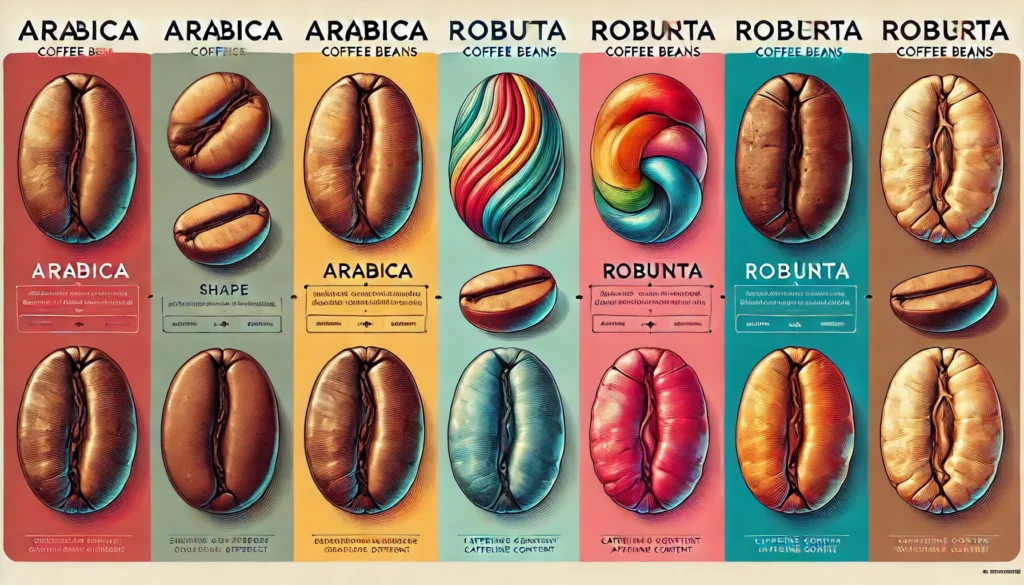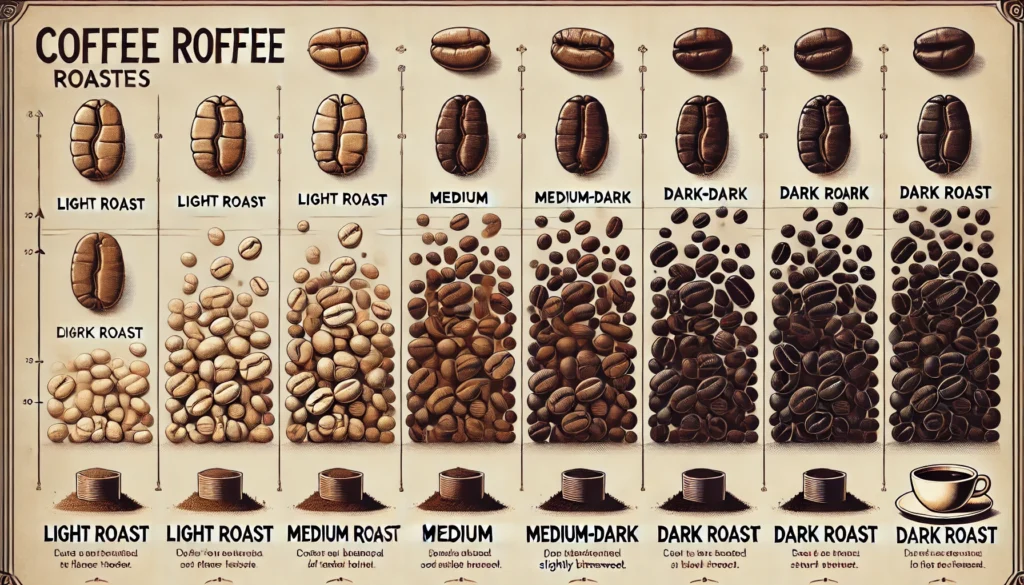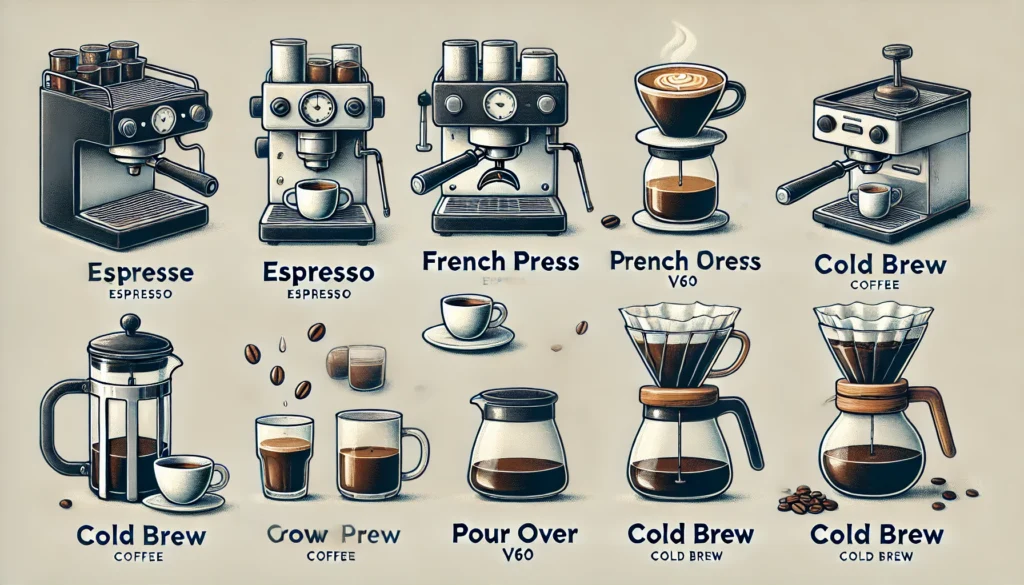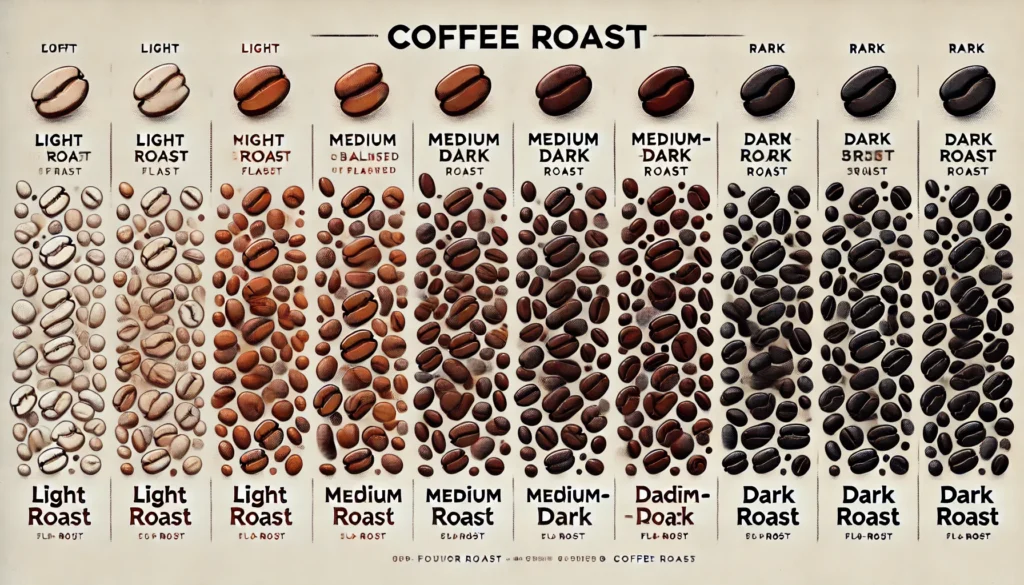Coffee Types and Roasting Styles
Hello coffee lovers!
Today, I want to take you on a journey into the depths of the coffee world. We will explore the fascinating varieties of coffee, roasting styles, and how these processes affect the aroma of coffee. So, grab your coffee and let’s start reading!

Coffee Bean Types
- Arabica (Coffea Arabica):
- Aroma and Taste: Usually lighter, with fruity and floral notes.
- Cultivation: Grown at high altitudes, requiring more careful maintenance due to their delicate nature.
- Robusta (Coffea Canephora):
- Aroma and Taste: Stronger, more bitter, and earthy flavors.
- Cultivation: Grown at lower altitudes, more resilient, and higher in caffeine content.

Coffee Roasting Styles
- Light Roast:
- Color: Light brown.
- Taste: Acidic, fruity, and floral flavors are prominent.
- Examples: Cinnamon, New England roasts.
- Medium Roast:
- Color: Medium brown.
- Taste: Balanced acidity and sweetness, complex aroma profiles.
- Examples: American, City, Breakfast roasts.
- Dark Roast:
- Color: Dark brown, almost black.
- Taste: Low acidity, intense and smoky flavors.
- Examples: French, Italian, Espresso roasts.

Coffee Roasting Levels:
- Light Roast:
- Color: Light brown.
- Aroma and Flavor: Generally more acidic with light fruity notes. The original flavors of the bean are more pronounced.
- Roasting Duration: Roasted until the first crack, typically between 195-205°C (383-401°F).
- Example: Cinnamon Roast.
- Medium Roast:
- Color: Medium brown.
- Aroma and Flavor: Balanced acidity and body. Both the bean’s natural flavors and roast notes are noticeable.
- Roasting Duration: Roasted slightly past the first crack, usually between 210-220°C (410-428°F).
- Example: City Roast.
- Medium-Dark Roast:
- Color: Darker brown with a slightly oily surface.
- Aroma and Flavor: Rich and intense flavors. Slight bitterness and caramelized sugar notes become more apparent.
- Roasting Duration: Stopped just before or right after the second crack, generally between 225-230°C (437-446°F).
- Example: Full City Roast.
- Dark Roast:
- Color: Very dark brown or black, oily surface.
- Aroma and Flavor: Smoky and charred flavors. Acidity decreases, bitterness increases.
- Roasting Duration: Roasted beyond the second crack, typically at 240°C (464°F) and above.
- Example: French Roast, Espresso Roast.

Coffee Brewing Methods and Equipment:
- Espresso:
- Equipment: Espresso Machine.
- Brewing: Finely ground coffee, brewed under 9 bars of pressure for 25-30 seconds.
- Flavor: Intense, rich, and creamy.
- French Press:
- Equipment: French Press.
- Brewing: Coarsely ground coffee, steeped in hot water for 4 minutes.
- Flavor: Full-bodied and oily texture.
- Pour Over (V60):
- Equipment: V60 Dripper, filter paper.
- Brewing: Medium-fine ground coffee, brewed with controlled hot water pouring.
- Flavor: Clean, light, and bright acidity.
- Cold Brew:
- Equipment: Cold Brew Maker.
- Brewing: Coarsely ground coffee, steeped in cold water for 12-24 hours.
- Flavor: Low acidity, smooth and slightly sweet.
These details provide a basic understanding of different coffee types and brewing methods. The world of coffee is vast and deep, always offering new things to learn and try.

Coffee Brewing Methods
- Espresso:
- Brewing: High-pressure hot water is forced through finely ground coffee.
- Aroma and Taste: Intense and concentrated flavor with a creamy top layer (crema).
- French Press:
- Brewing: Coarse ground coffee is steeped in hot water and then filtered with a plunger.
- Aroma and Taste: Rich and full-bodied coffee.
- Pour Over (V60):
- Brewing: Hot water is slowly poured over finely ground coffee.
- Aroma and Taste: Clean, light, and acidic flavors.
- Cold Brew:
- Brewing: Coarse ground coffee is steeped in cold water for an extended period.
- Aroma and Taste: Less acidic, smooth, and sweet coffee.



